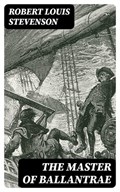In 'The Master of Ballantrae,' Robert Louis Stevenson weaves a gripping tale of rivalry, betrayal, and the haunting effects of familial discord. Set during the aftermath of the Jacobite uprising, the novel employs a rich, atmospheric narrative style steeped in gothic elements and adventure. The duality of its protagonist, the enigmatic and morally ambiguous Master James Durie, explores themes of loyalty and duality amidst the backdrop of a tumultuous Scotland, embodying the era's socio-political tensions and the allure of a lost cause. Stevenson's experimental narrative structure and psychological depth make this work not only a compelling read but also an exploration of the complex human condition. Stevenson—who spent his life navigating between Scotland and England—was deeply influenced by the historical and cultural tumult of his homeland. His fascination with the moral complexities of human nature, shaped by his upbringing and extensive travels, culminates in the creation of a character like the Master, who embodies both charisma and danger. Stevenson's acute understanding of the human psyche and his own experiences with rebellion manifest in this novel, reflecting a yearning for adventure amidst personal strife. 'The Master of Ballantrae' is highly recommended for readers who appreciate intricate character studies and morally complex narratives. Whether one is drawn to the historical context or the psychological dimensions of the characters, Stevenson's work offers a tantalizing exploration that resonates with contemporary themes of ambition and conflict. It stands as a testament to the author's literary genius and invites readers to grapple with the profound questions of identity and fidelity.

